-
Lohff & Pfeiffer
About Lohff & Pfeiffer
Iimprint
Contact
Newsletter
Location
L&P team
- Instruments
General
Trade options
About clarinet
Search specific instrument
Ab-clarinet
Eb-clarinet
D-clarinet
C-clarinet
Bb-clarinet
A-clarinet
Mozart basset-clarinet A
G-clarinet
Bassethorn F
Alto-clarinet Eb
Bass-clarinet
Contraalto Eb-clarinet
Contrabasse Bb-clarinet
German-Albert system Bb
Reform Boehm A & Bb
Peter Bastian Instruments
Plateau clarinets
Quartertone clarinet
- L&P Optimization
Optimization
Customization
Specialities
Special Keywork
- Accessories
General
Care products
For instruments
Reeds
Tools for reeds
Straps and hand rests
- Repair
Book time
About Repair
Maintenance
Plating-Surface treatment
Pads
Padding style
Cracks
Tone hole problems
Joints
- Tips & Advice
How to..
Videos
Worldwide external information
Problems & help
Education & learning
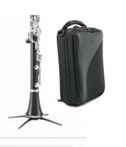
Store Instruments always vertically.Instrument maintenance
Clarinets are comparatively easy to maintain.
1. Storage:
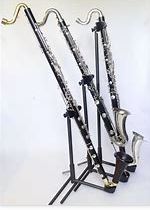
The keys havet to show upwards-allways!
You may keep the instrument on a peg or inside the case. In both cases, always keep the instrument in a vertical position. This way, remaining spill-water can run down the bore.
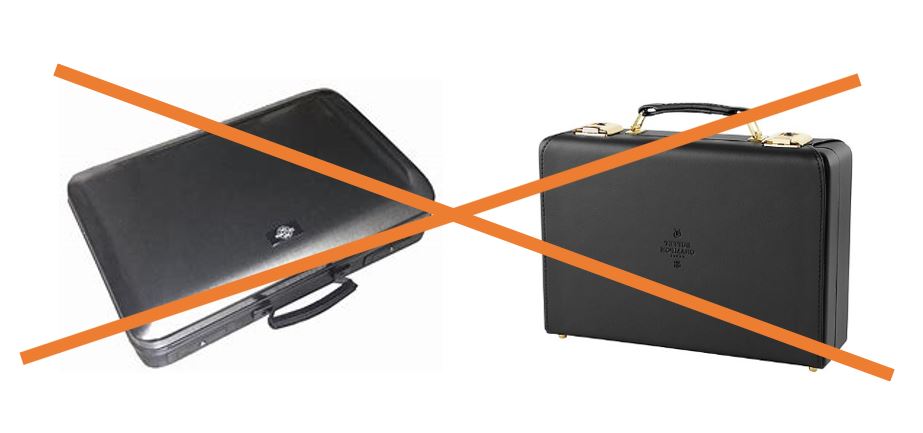
Never lay a wooden instrument vertically
It will help to keep the body in shape. In case there are small children or pets in the household, keep it out of reach.
When you place the instrument onto the table, always have the keys on the top, so that water can't run into the tone holes.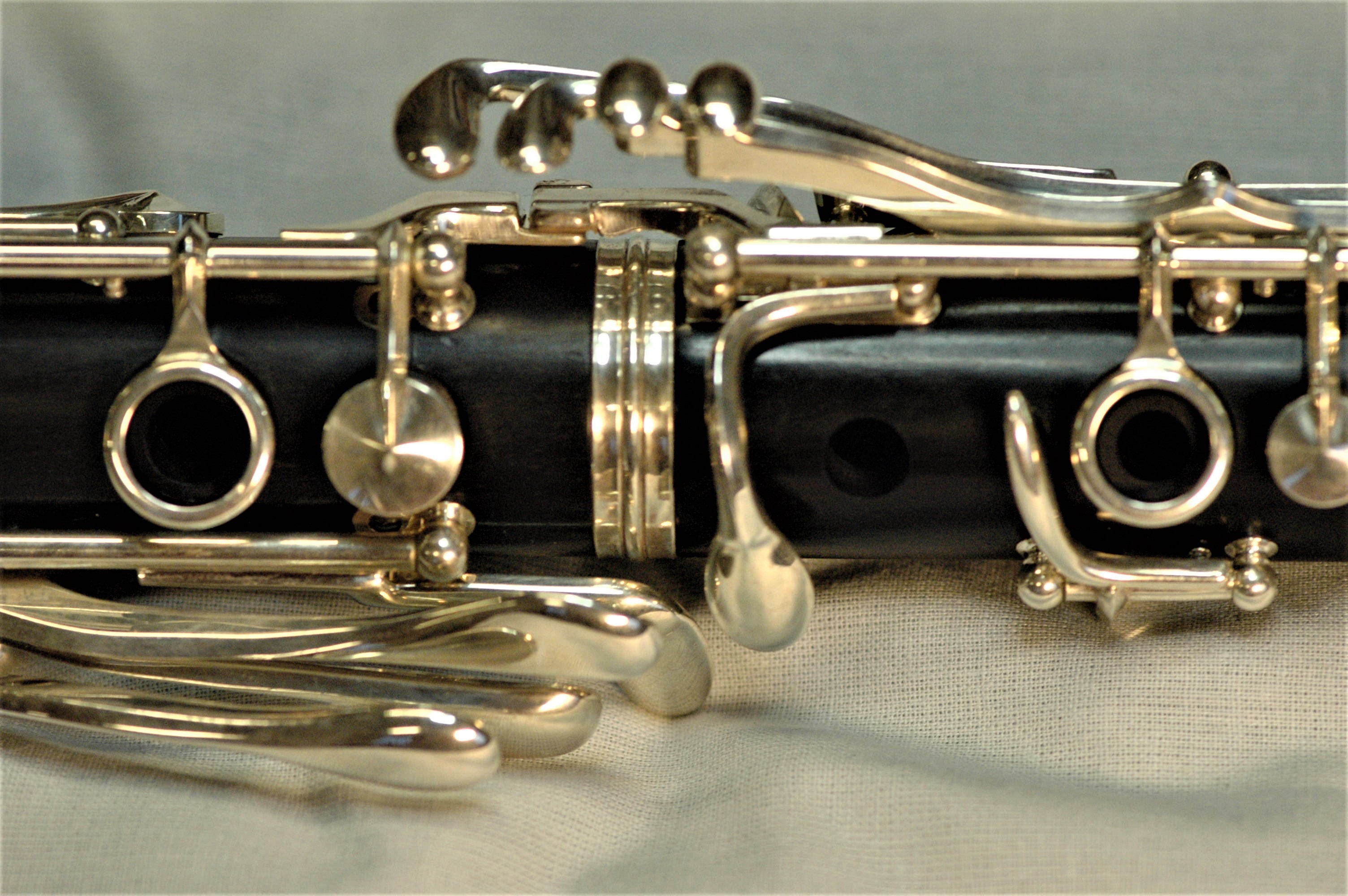
Be sensitive when you put your saxophone down. The bell will usually hit the table first, and this might bend it over time.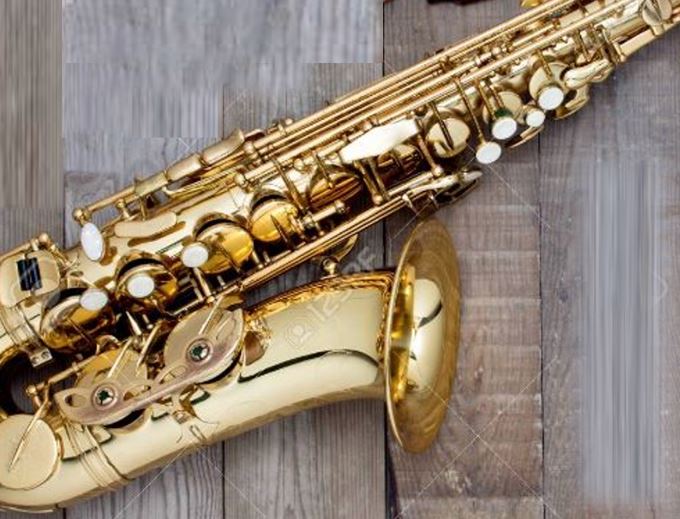
Lay it carefully onto the table with this side
Harmony clarinets should always have the keys showing up, because of the same reason. When water can run into the tone holes, they will develop lots of small cracks, which will cause leaks.
2. Assembling the instrument:
Take the bell and press in onto the lower joint. If your instrument has a resonance key mounted on the bell, watch out not to bend the connection. Hold the lower joint where the hand rest and ring-key is. Avoid pressing the right-hand C/F lever. It is one of the most common reasons why the C/F key gets out of adjustment. See also read more
3. Next, take the top joint, hold it tightly where the ring-keys are, and press the barrel onto the top joint. Stay away from the two top side trill-keys. When you have an instrument with cork pads, this will squeeze and break the cork pads, which would result in a leaking top joint. Even if you don't have an instrument with cork pads, it's a good habit to get into. You might get cork pads at one point or try instruments that have them and could cause unnecessary problems. Check also the article about: Barrel issues
4. Press the top joint with the barrel mounted onto the lower joint. Keep an eye on the bridge-key to make sure not to bend it. It is, in particular, important for bass clarinets, basset horns, and alto clarinets, where you have several connecting keys.
Swab the instrument: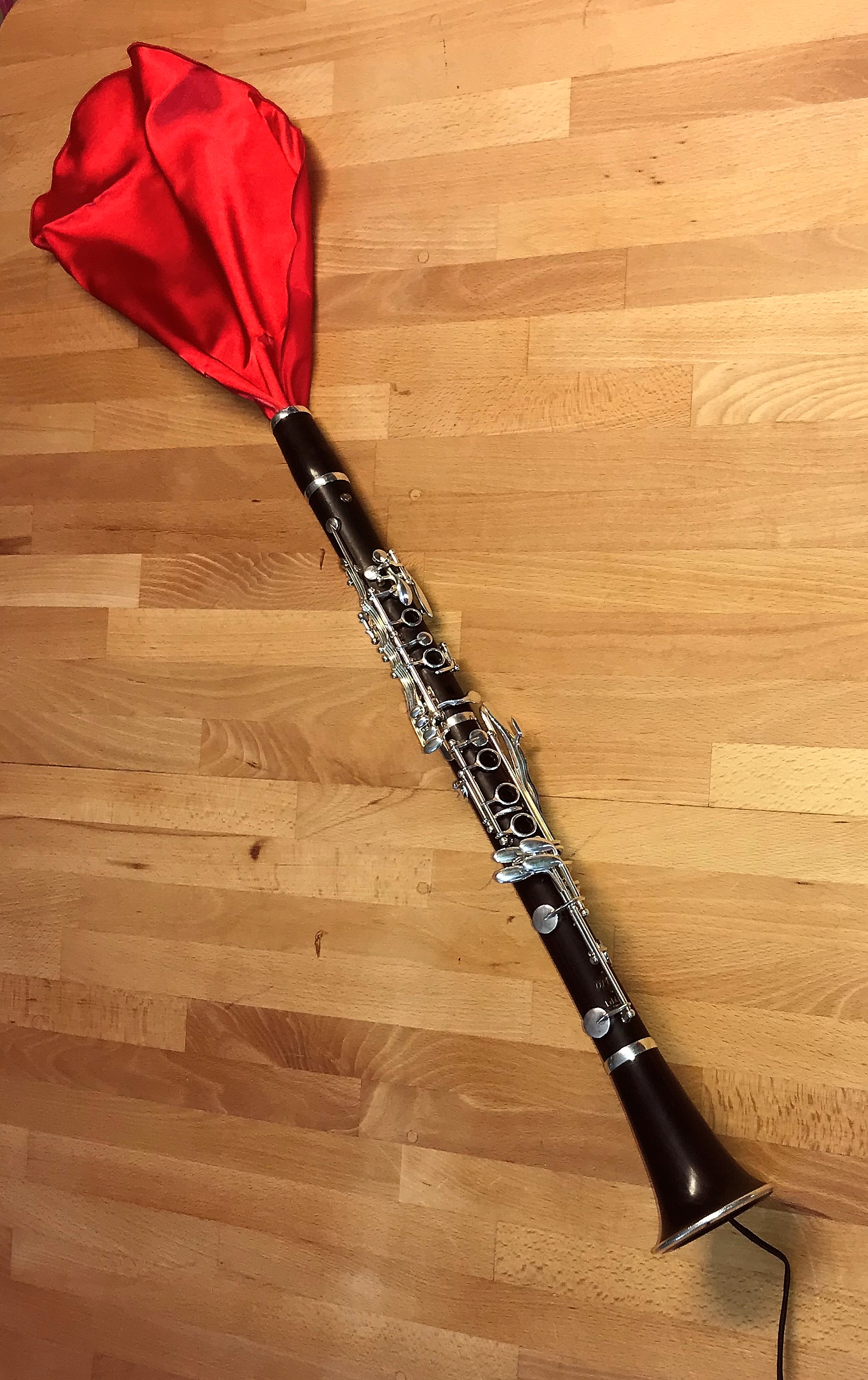
Best are microbibre pull through swabs or goose fethers
Use only microfiber or silk pull-through swabs. In case you can get hold of some large goose feathers, that would be even better. The swab must go through easily. Avoid bottle brush type swabs or swabs which press against the inside of the bore. You only want to remove the excess amount of water. The instrument does not need to be, nor should it be, super dry.
Always pull the swab from the top to the bottom. The narrowest spot in the clarinet is where the register tube sticks into the bore. If a pull-through swab gets stuck in the bore, you will always be able to pull it out if you started at the top. Don't pull the swab through the mouthpiece. It would wear out the tip too quickly.
Dry all sockets and tenons, even if you keep the instrument standing on a peg.
Wiping the keys:
After you have finished playing the instrument, wipe off the remaining finger sweat from the keys with a clean technical or microfiber cloth. It will help to keep the silver nice and shiny for longer. Don't use a silver cloth to take off the brownish or black patina. A silver cloth is like sandpaper and removes the silver-oxide. A proper silver cleaning is better done chemically with the next maintenance.
Screw and rods:
You might sometimes see that a screw or rod is loose. If it is a rod, they go through the post and the key to the opposite post, don't hesitate to tighten it again.
If it is a pivot screw, these are the ones that just go through the post and hold the key on one side. You might have to be more careful. Depending on the humidity, you might not be able to tighten the screw all the way. The key would get stuck. If that happens, just loosen it so much that the key can freely operate but without wobbling.
Tenon cork grease:
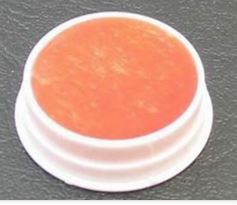
Corkgrease
We use a biological cork grease called deer grease. Once applied, you usually don't need to do it anymore or if so, only very rarely. You want a firm tight grip and airtight connection. br> If you use a Vaseline based grease, they usually come in the form of a cork-pen, the grease needs to be removed from time to time. You can just use 70% alcohol or a paper towel. If the joints are so loose that they could fall apart, get them renewed, or wrap a layer of tape or paper around the cork before you push the joints together.
Check for leaks:
Regularly check for leaks or get it checked. You can self-check the top joint by closing all open tone holes with one hand (finger the C/G) and close the bore on one side with your thumb. Then try to create a vacuum by sucking on the open end of the bore. Do it without pressing on the rings or any keys. Just lay your fingers lightly onto the tone-holes. It should be as tight as a bottle and keep the vacuum. Do the same with the lower joint. This might need some practice and experience to be sure. If in doubt, ask a repair specialist you trust.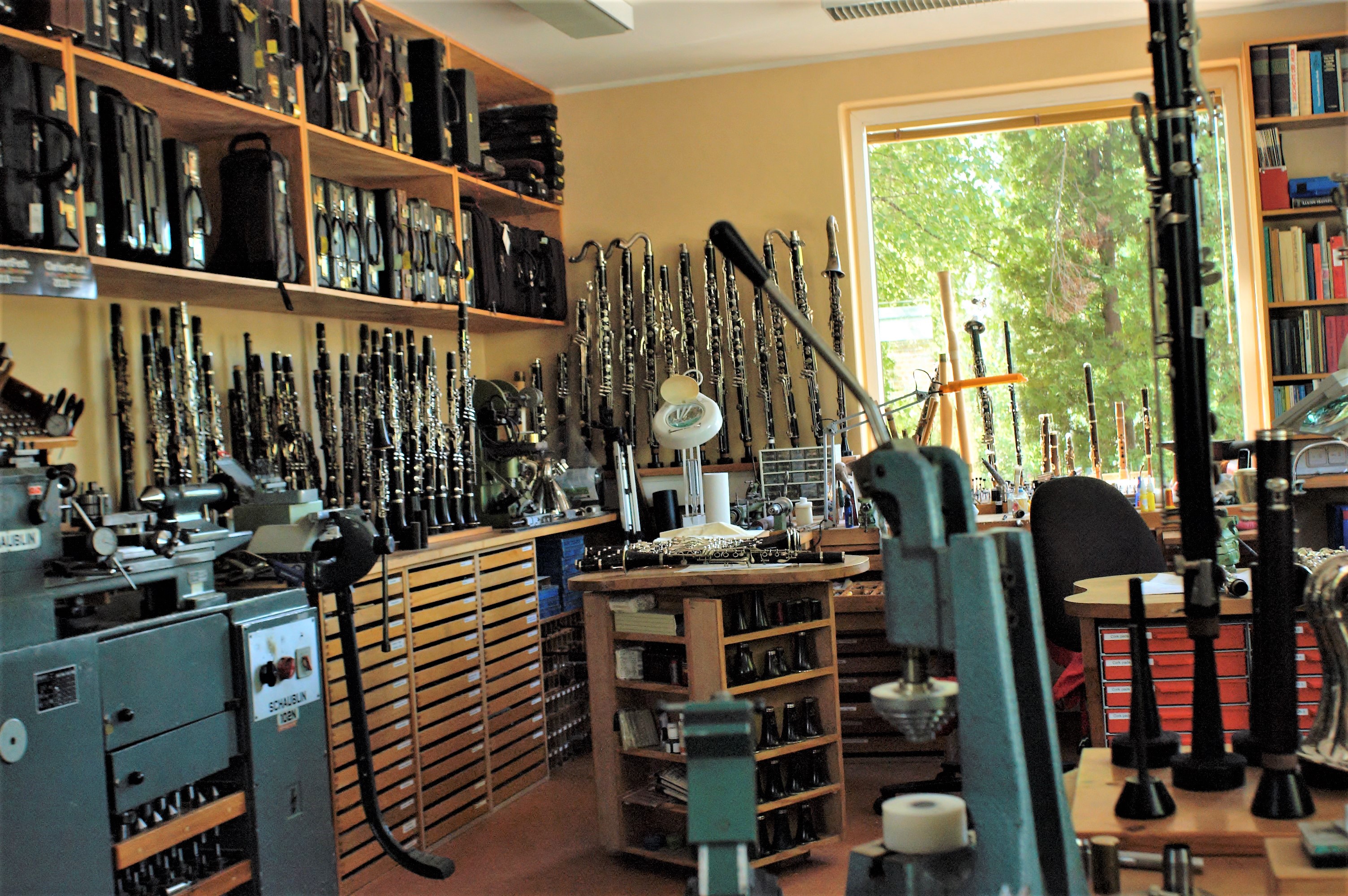
Get it checked regularly
Checkups:
Depending on the type of pads you have, get your instrument checked by an expert. Leaks start slowly, and you get used to them. It's like driving a car, which has holes in the gas pipe. You don't notice it yourself while playing. You only see that your mileage is down.
Fish skin pads and Valentino pads should be checked once a year. Leather pads after 2 years. Cork, impregnated leather pads and silent pads after 3-5 years. These pads last much longer, but the tone hole might have developed small faults that might need to be taken care of. Woodwind instruments should always stand up, not lie down, to allow the water to run down and keep its shape.
Help us to get better
Was this article helpful?
Comments, additions or questions are always welcome at: info@clarinet.dk(C)2011 - by Lohff & Pfeiffer USA-6220 Rhode Island Ave-Riverdale Park MD 20737 - USA - Phone: (812) 929 5556 & 415 470 6879 - info@clarinet.dk - Instruments






